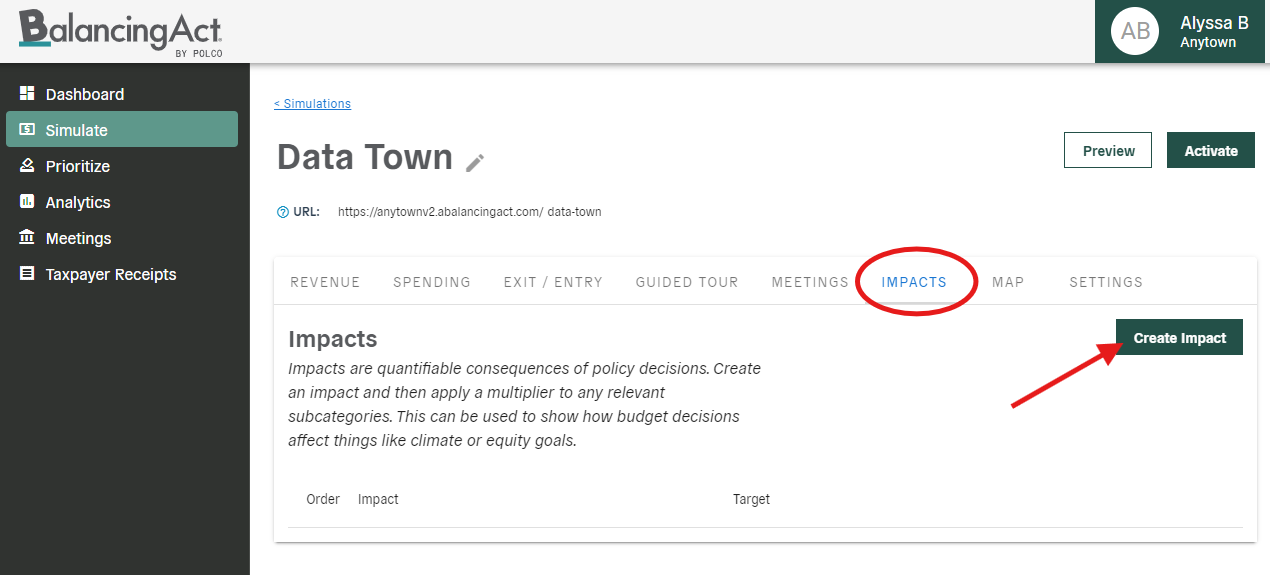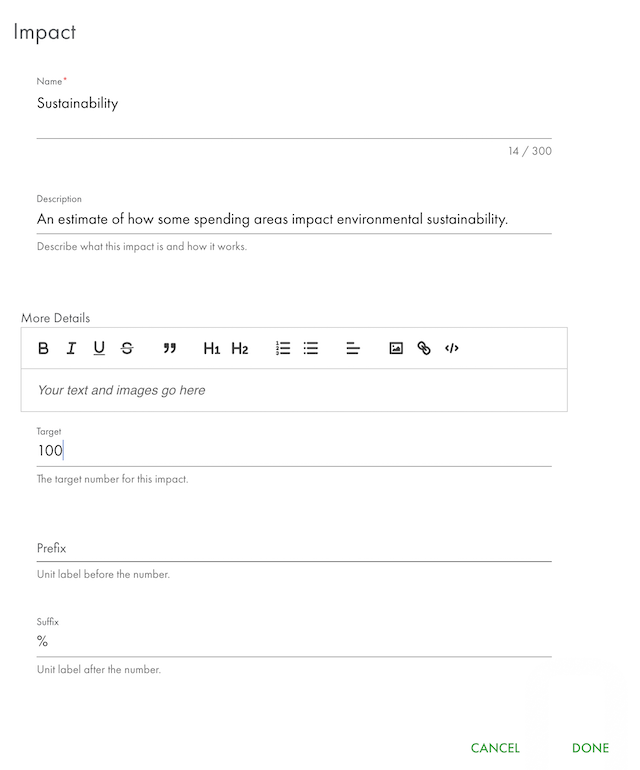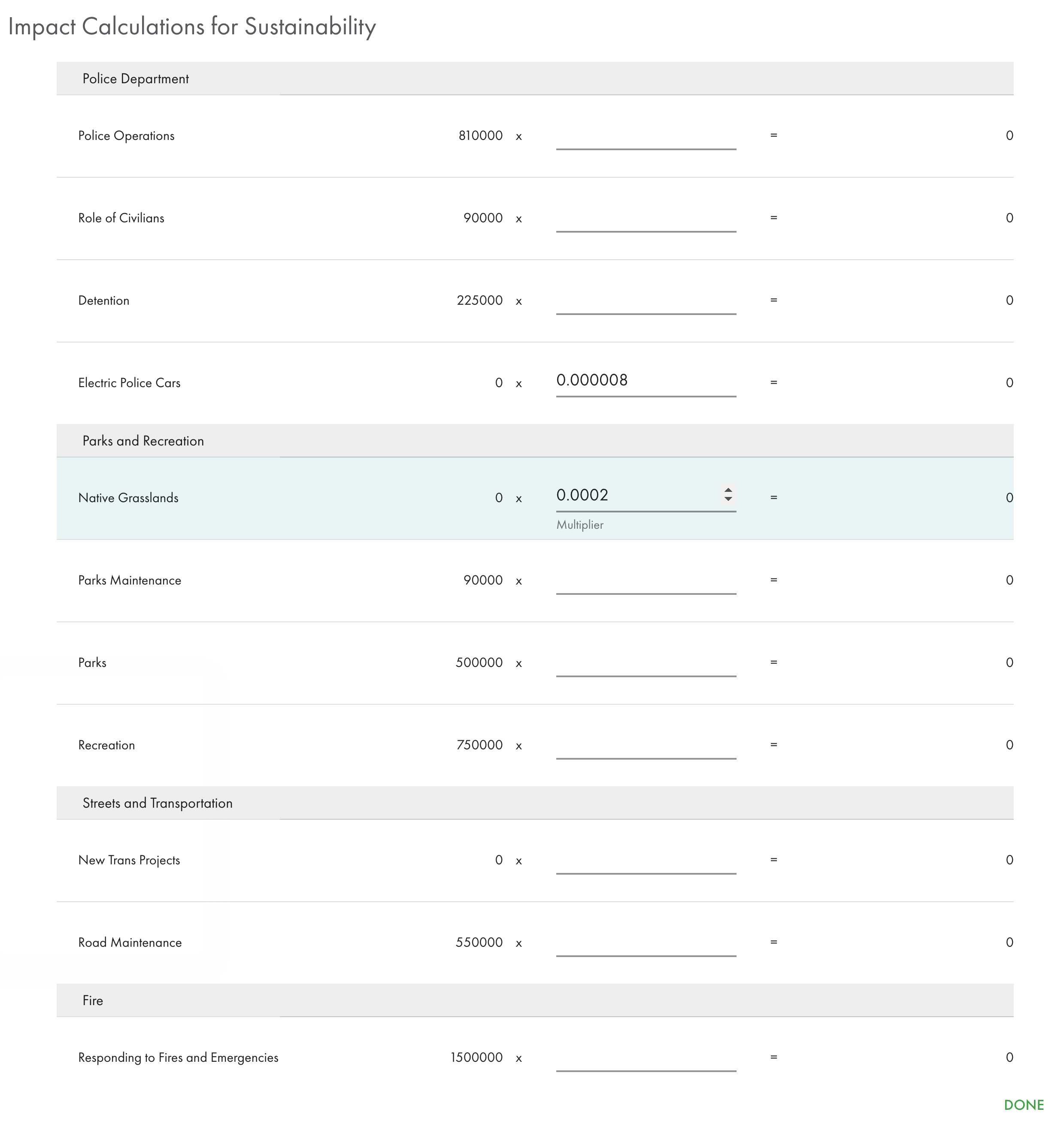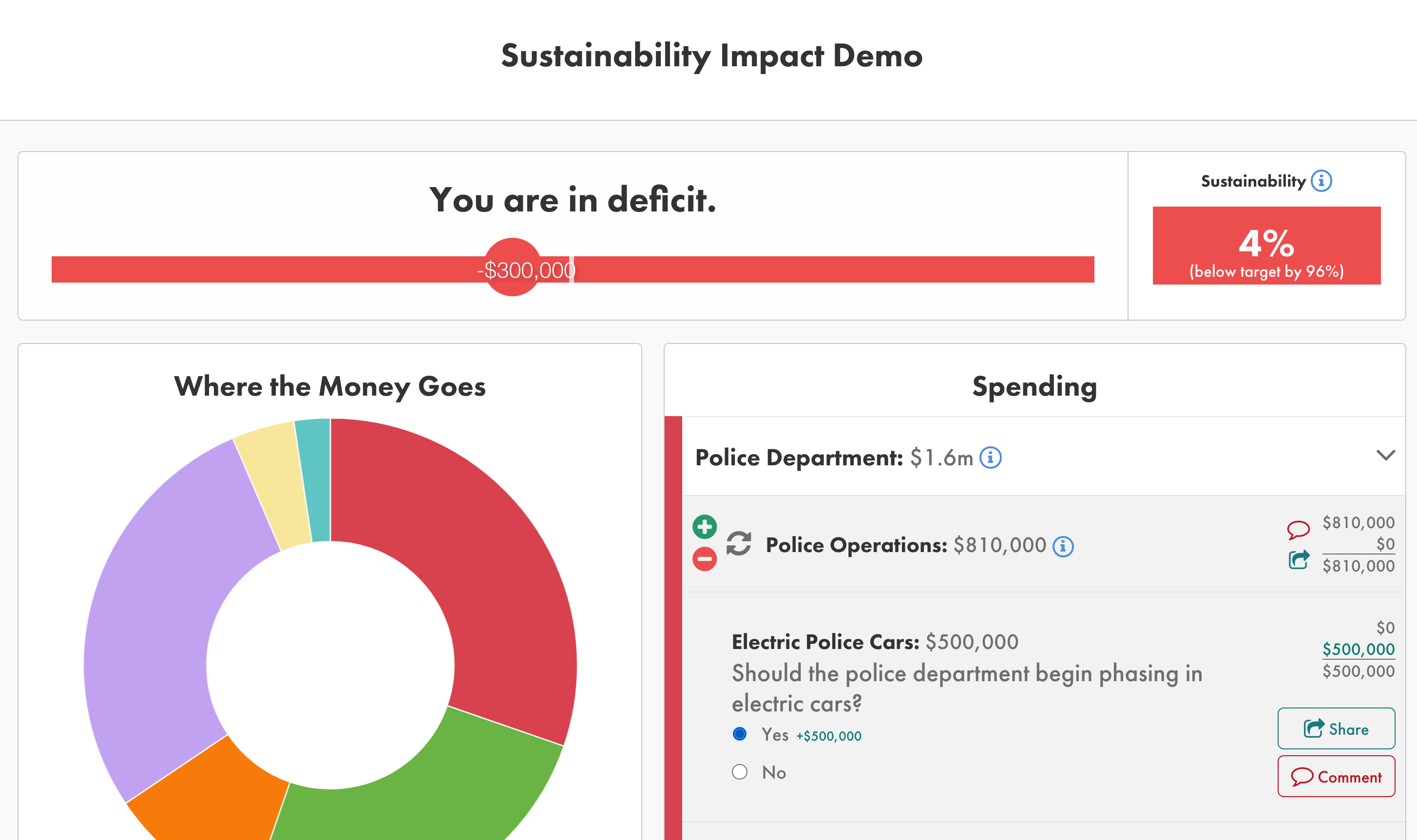Budget simulations help demonstrate the effect line-item choices have on the bottom line. But the consequences of budget decisions don't stop at the finance office. Each item can reflect trade-offs between financial resources and other important priorities like equity, sustainability, and long-term financial outlook. Adding an impact to a budget simulation helps you show how changes to some budget items affect both this year's bottom line and that additional priority.
To add one or more impacts to your simulation, follow the steps below:
-
While editing a simulation, navigate to the Impacts tab. If you don't see it, contact us to get it enabled. Then click the "Create Impact" button.

- Fill out the fields in the pop-up modal and click "Done".

- Next to the impact you just created, click the gear icon.

- Enter multipliers for any budget subcategories that should affect the impact. The subcategory's contribution to the impact total during the simulation will be the subcategory's current dollar amount times the multiplier. If you have a large dollar amount and you want small impact for a subcategory, then the multiplier should be a very small number.

Note: If you want your impact total to start out at zero, then make sure that any subcategories with multipliers also start out at zero. Additionally, you can use a scenario question to provide an option with a specific dollar amount. In the case above, the "Electric Police Car" subcategory has an initial value of zero and two multiple choice options: No ($0) and Yes ($500,000).
- Finally, preview your budget simulation and adjust one of the categories with an impact multiplier. The impact will appear in the upper-right corner of the simulation as changes are made.

Considerations
Adding an impact to your budget simulation is simple enough once you know how much each relevant subcategory should affect the total. But how should you decide those numbers? Sometimes it will be straightforward and objective, such as showing the impact to your reserve fund. However, many other community priorities are difficult to quantify. Impacts like equity and environmental sustainability will only be estimates. Planning documents and community organizations are two potential resources to help you create these estimates.
